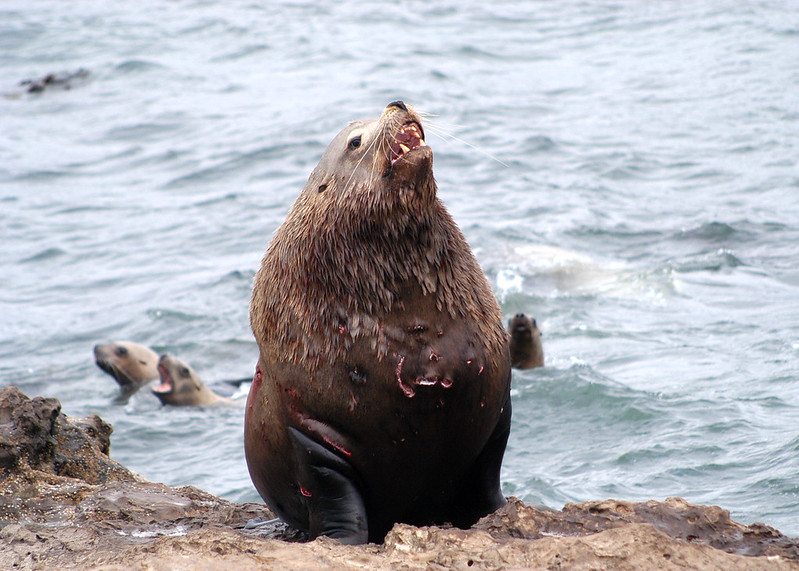First Steller Sea Lion Lethally Removed At Willamette Falls
A Steller sea lion has been lethally removed at Willamette Falls, another first as Northwest states and tribes work to reduce pinniped predation on ESA-listed salmon, steelhead and other stocks in the Columbia system.

ODFW reported the action on its sea lion management web page, and it follows on last fall’s euthanization of six males at Bonneville.
Lethal removals had been limited to California sea lions until Congress amended the Marine Mammal Protection Act in late 2018 and last August the National Marine Fisheries Service permitted ODFW, WDFW, IDFG and Nez Perce, Yakama, Umatilla, Warm Springs and other tribal entities to kill up to 176 Stellers over a five-year period.
Removing that first 1,300- to 1,500-pound animal at the falls upstream of Portland earlier this month was described as a “really important step in addressing the predation issues with that species” by Dr. Shaun Clements, ODFW Fish Division assistant administrator.
Sea lions are estimated to consume as much as 44 percent of the spring Chinook run up the Columbia, according to his agency, and at least one of the Willamette River’s wild winter-run steelhead runs faced an 89 percent risk of extinction before 33 Californias were removed by ODFW at the falls in 2018 and 2019 under a separate state permit.
Clements reports that for the second winter in a row, no CSLs took up residence at the falls, which “bodes well for continued low predation on winter steelhead. It was 0.1 percent in 2020, down from the high of 20 to 25 percent in 2017-18.”
He said that ODFW crews have put in a fair amount of work to begin being able to deal with Stellers there, and that includes “acquiring the gear and developing procedures to handle these larger, more aggressive animals” that can grow in excess of 1,500 pounds.
As no NMFS-approved zoo or aquarium facilities were available to receive candidate sea lions for permanent holding, all seven Stellers – the six from Bonneville and the one from the falls – were chemically euthanized by a veterinarian
The goal of the removals is to provide “safe zones” for Chinook, coho, steelhead, sturgeon, smelt and other fish at key pinchpoints in the Columbia.
While the permit gives state and tribal partners a much bigger section of water to work with – the big river from I-205 upstream to McNary Dam and all tributaries where ESA-listed salmon and steelhead spawn – the equipment needed to handle Stellers has so far limited operations to the falls and Bonneville.
In addition to 176 Stellers, the federal authorization allows for the removal of up to 540 Californias. Both figures are well within the so-called “potential biological removal” limit for each species.
Earlier this year, ODFW launched a new online tool to report sea lions and seals in the Columbia. It allows users to share information on when, where and how many pinnipeds they saw; what the marine mammals were doing – e.g., “consuming prey (not stolen from an angler); consuming prey (stolen from an angler),” etc. – provide photos; and share other details of their observation.
Meanwhile, state crews have been patrolling the Willamette in search of sea lions. Clements reports none were seen on last Saturday’s boat survey, and none by a short-based observer at the falls since early last week.
“We’re expecting some CSL to arrive later this month and will be removing those,” he said.
Stellers are also expected to show up at Bonneville soon as the spring Chinook run begins to build. Operations were expected to resume there this month as well.
